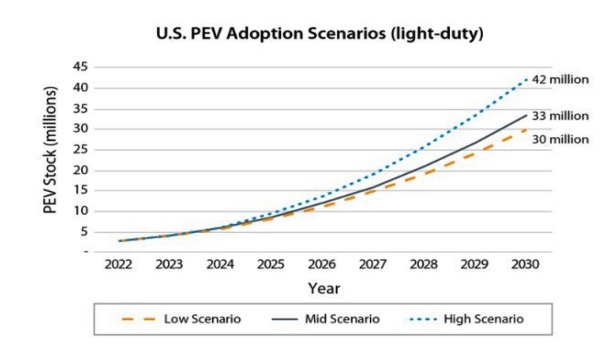The rise in electric vehicle ownership has caused some concern about whether or not the US electric grid can handle the influx. According to the Department of Energy, it is projected there will be 30 million to 42 million light-duty plug-in electric vehicles (PEV) on the road by 2030 and zero-emission vehicles (ZEV) sales for medium- to heavy-duty (MHD) could be 42% of all MHD trucks by the same year.
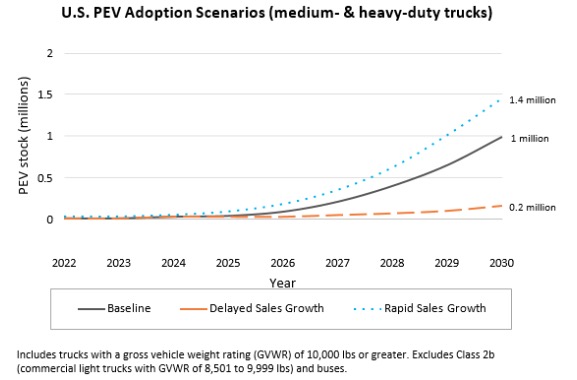
As EV ownership continues to grow, successful updates and integrations with the electric grid will be required to “reduce emissions, maintain reliable and resilient electricity, reduce system cost, and enable a seamless charging experience.”
What is the electric grid and how is reliability defined?
The current US electric grid is composed of a wide collection of power plants, transmission lines, and distribution centers and was created to balance supply and demand from industries and residents. High-voltage transmission lines transport electricity long distances to local substations, which convert it to a lower voltage for distribution. Though it is over 140 years old, its basic structure has remained very similar to its original development.
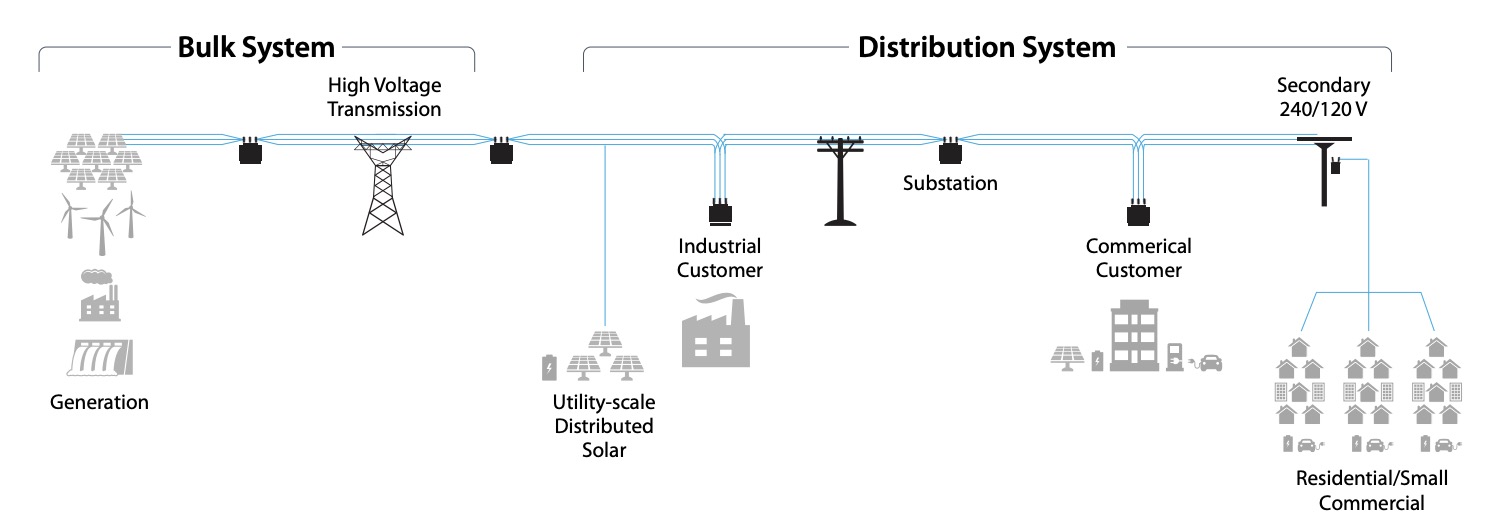
Grid reliability is determined differently for the distribution system and the bulk system. National Renewable Energy Laboratory (NREL) categorizes bulk power system reliability through three components: resource adequacy, operational reliability, and resilience.
Resource adequacy
Per the North American Electric Reliability Corporation (NERC), resource adequacy is defined as “the ability of the electricity system to supply the aggregate electrical demand and energy requirements of the end use customers at all times, taking into account scheduled and reasonably expected unscheduled outages of system elements.” In other words, even during failures, the system still has enough reserve capacity to replace the failed capacity.
Operating reliability
NREL defines operating reliability as the ability of the system to “balance supply and demand in real time, including maintaining the supply of electricity in the seconds and minutes during and immediately following a large power plant or transmission line failure.”
It also defines the difference between resource adequacy and operating reliability: “resource adequacy focuses on having enough generators and transmission available to meet demand, and operational reliability focuses on how those generators are operated in real time.”
Resilience
According to the Federal Energy Regulatory Commission (FERC), resilience is “the ability to withstand and reduce the magnitude and/or duration of disruptive events, which includes the capability to anticipate, absorb, adapt to, and/or rapidly recover from such an event.”
The difference between resource adequacy and resilience is that “resource adequacy reflects statistical measures of a huge number of historical events based on normal and not-so-normal conditions (including extreme weather)” and “resilience focuses on the most extreme events that are characterized by both high impact (or consequence) and low probability, typically affecting a large number of customers or geographic regions.”
Is the grid reliable enough for greater EV adoption?
EV ownership has increased significantly in the last decade and there is concern regarding the US electric grid’s ability to accommodate the growth. Additionally, as EV adoption usually happens within communities, more strain could be placed on particular areas sooner than later.
To better understand the needs for the future of the electric grid, it’s important to know how much EV charging affects it. Charging a single vehicle at a Level 1 or 2 charger is relatively minor, while DC fast chargers clustered together can cause much more strain.
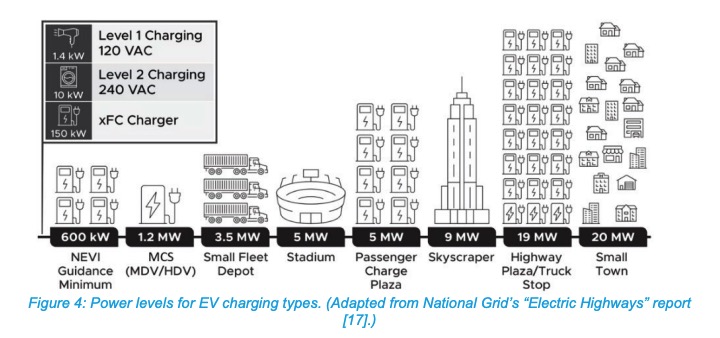
However, along with utility updates to support the growing needs of electric vehicles, the EVs themselves can play a significant part in helping the electric grid remain capable and stable through microgrids.
What are microgrids?
The US Department of Energy defines a microgrid as “a group of interconnected loads and distributed energy resources within clearly defined electrical boundaries that acts as a single controllable entity with respect to the grid. A microgrid can operate in either grid-connected or in island mode, including entirely off-grid applications.” Microgrid components are composed of electricity generation resources, battery energy storage, and microgrid control systems.
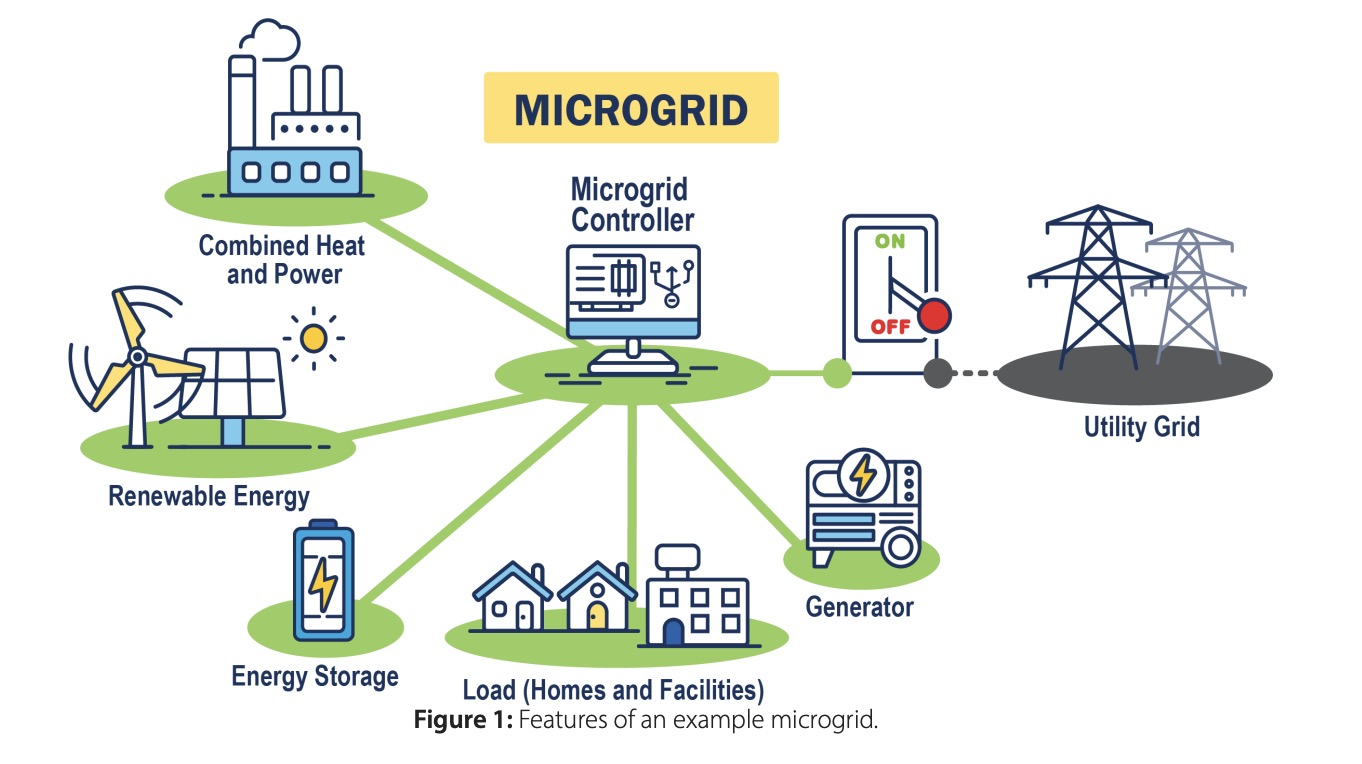
Microgrids are important because they can supply backup power to critical facilities for extended periods. Beyond emergency support, microgrids also strengthen the larger grid. They allow distributed energy resources to continue operating during outages and help ease pressure on the grid during peak demand times, reducing the risk of blackouts.
How can electric vehicles support the electric grid?
Electric vehicles can contribute to the electric grid through vehicle-to-grid (V2G) programs, which use the energy stored in EV batteries as a distributed network of backup electricity. V2G technology allows electric vehicles to both draw power from and send power back to the grid, creating new opportunities for grid stability and more efficient load management and stopping batteries from being overcharged.
V2G programs could help provide better frequency regulation during peak electric use hours by controlling the charging of connected EV batteries and supplying stored electricity back to the grid during peak demand, helping to balance power consumption and maintain grid stability. In a study published by Scientific Reports, it was shown that frequency regulation improved as connected EVs increased from 20 to 100.

Once V2G was turned off, the frequency variation was significantly worse, thus showing the importance of V2G programs in grid stability.
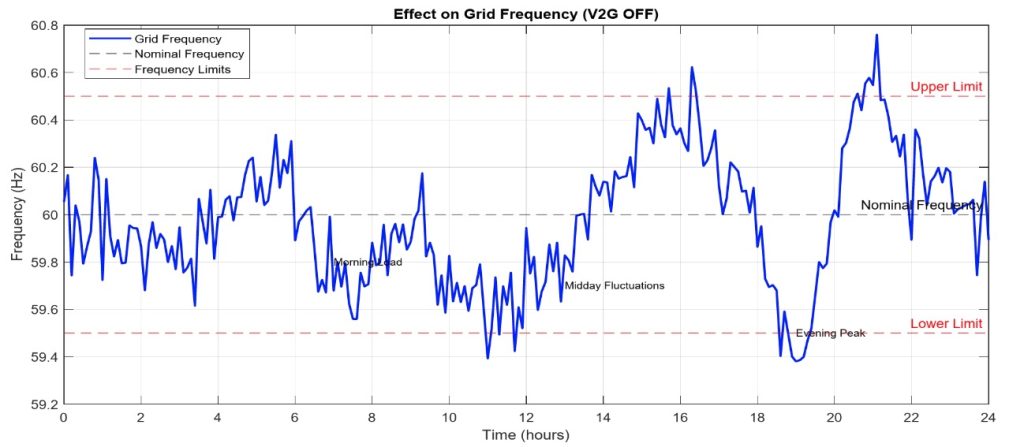
With V2G programs, EVs would charge after peak hours in order to be ready for the next day. It would rely on the market and consumers to willingly participate, but research conducted by NREL shows V2G programs could extend the life of EV batteries and thus be beneficial to EV owners.
What is already in motion to prepare the electric grid for the future?
Many of the concerns about higher EV adoption’s effect on the electric grid can be mitigated in a number of ways, making the grid more flexible and interactive. Infrastructure upgrades, control approaches, and market solutions all play a role in ensuring the grid does not experience overloads, feeder congestion, or lesser power quality with more EVs on the road, especially at places with many fast chargers like truck stops and travel plazas. To help provide better responsiveness between power producers and consumers, the US Department of Energy has enacted a national policy goal to build a smart grid, or “digital technology that allows for two-way communication between the utility and its customers.”
There are certainly challenges with the influx of EV charging and integrating V2G programs, including managing unpredictable charging patterns, maintaining voltage and frequency stability, coordinating multiple EVs, ensuring scalability, and optimizing both grid support and battery longevity. However, though the current electric grid would need major updates for widespread V2G programs, there is already research and updates being conducted to assess the forthcoming electric grid needs and make necessary changes, and it is unlikely there will be major effects on the system for a while.
While more electric vehicles charging will increase demand on the electric grid, some parts of the grid have already implemented alternative sources like solar and wind to help meet peak needs. It is likely that non-fossil fuel generation will become more popular and fossil fuels will only be used as-needed, cutting carbonization by 80-90%.
Another solution is to use EV aggregation, or coordinating multiple electric vehicles to act as a single resource for the power grid, to control too many EVs charging at once. However, circumstances such as an EV remaining plugged in while fully charged makes this more difficult than simply adding each EV’s charging capacity together. This can be combated by scaling factors or by sending price signals to individual EVs so it will only charge when power is cheapest.
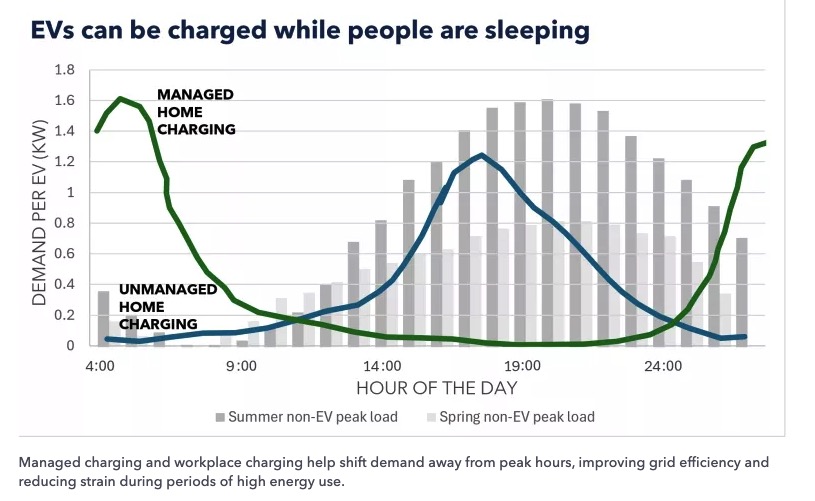
Additionally, EV charging is inherently flexible—which can greatly reduce the need for new capacity—and most EVs are charged overnight, during off-peak hours, which helps keep demand balanced and cost down for all consumers. This is because as utilities earn more revenue from EV charging, fixed grid maintenance costs are distributed over more kilowatt-hours. There is also research to support that initial electric truck and bus deployments require less power than initially anticipated.
Programs like EVGrid Assist: Enabling Vehicle Grid Integration by the US Department of Energy will be essential moving forward. The program has multiple resources and webinars to teach about new vehicle grid integration technology, coordinate between stakeholders within the EV and electricity industries, collaborate to find solutions, and provide technical assistance.
The future of the electric grid and EVs
More research will need to be conducted to understand what updates the electric grid needs to continue meeting EV charging demand. A large portion of prior research has focused on plug-in hybrid EVs, which have smaller batteries and require less charging; the continued greater adoption of fully electric vehicles will require updated studies. Additionally, many studies have focused on newer distribution feeders and do not consider that many EVs in the coming years will include older distribution grids and feeders that are already strained.
Multiple approaches will need to be taken to prepare the electric grid for greater EV adoption and while some updates will be necessary, there are many ways that these changes can be minimized or even eliminated. This includes collaboration through sharing information across entities and between systems and more standardized equipment across the industry and shifting to a grid that is driven more by consumer behavior. If approached correctly, an increase in EVs on the road will not overload the electric grid and will likely play a major part in creating grid stability.

Whitney began working with IACT in 2023. With a degree in English and a minor in Art, Whitney has worked as both a newspaper reporter and a digital marketing and events manager, bringing 7 years of marketing and 8 years of content creation experience to IACT. Whitney is passionate about nature and preserving the environment, including solutions to cleaner air and greater sustainability, and is a former Chicago resident.




